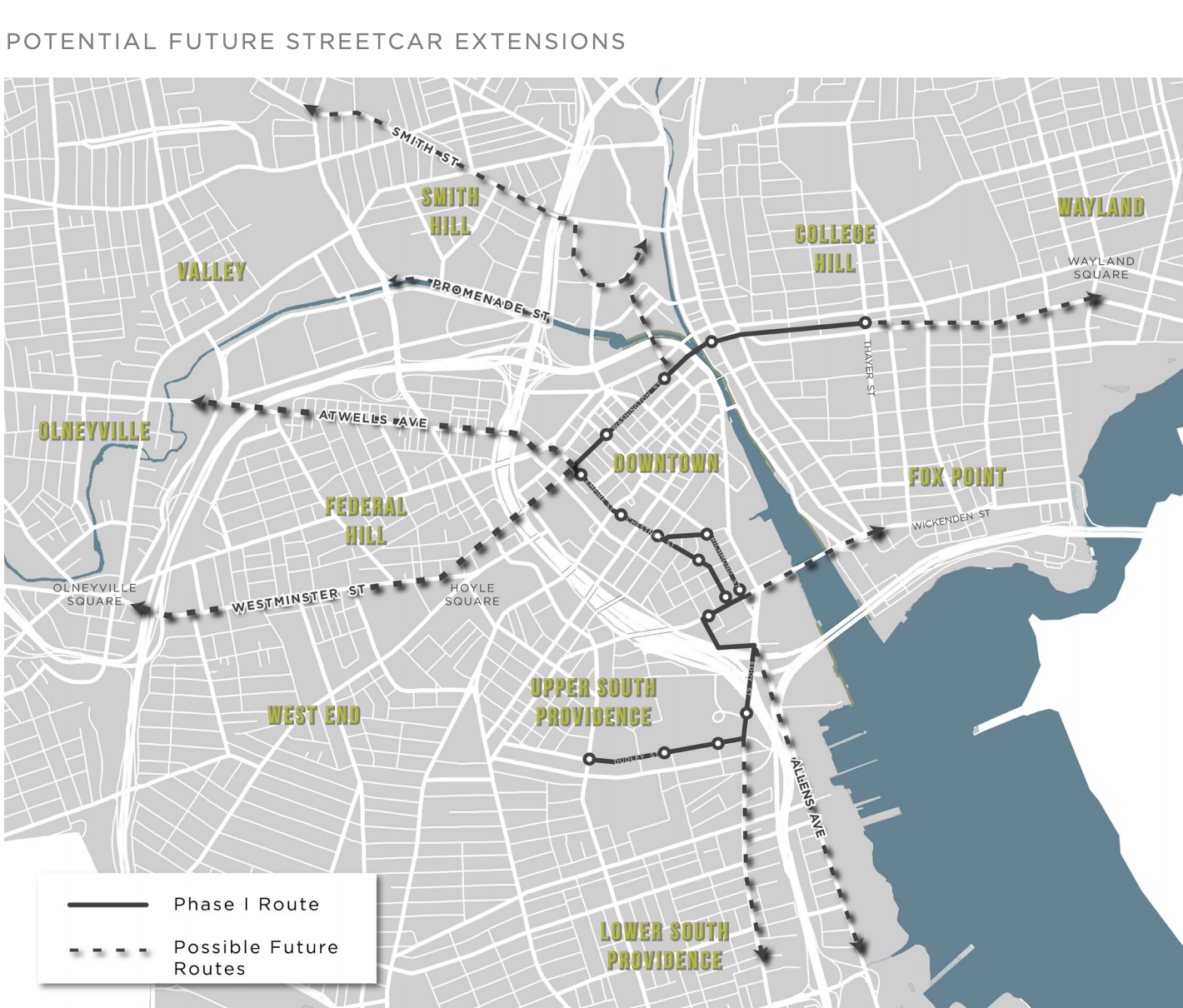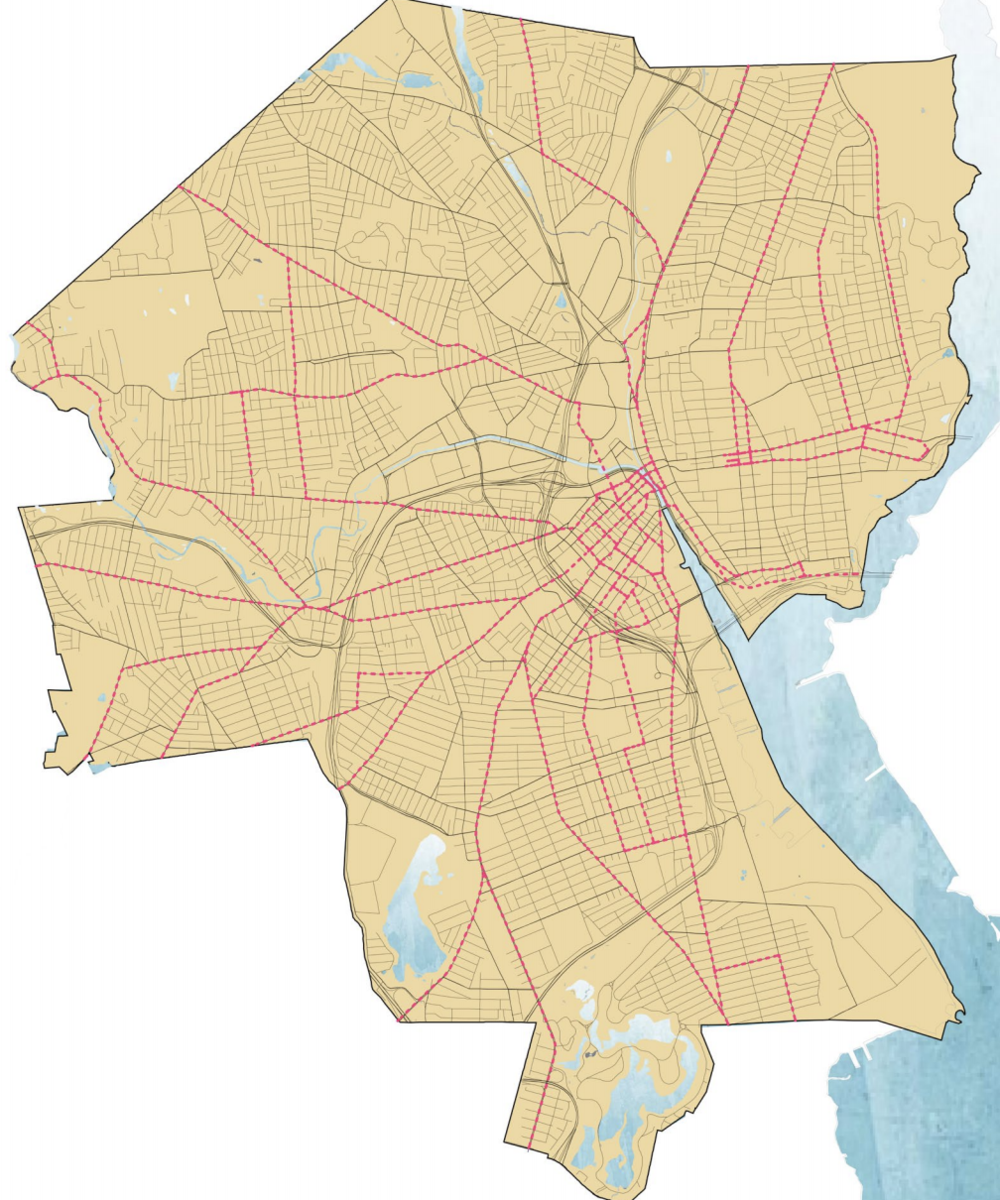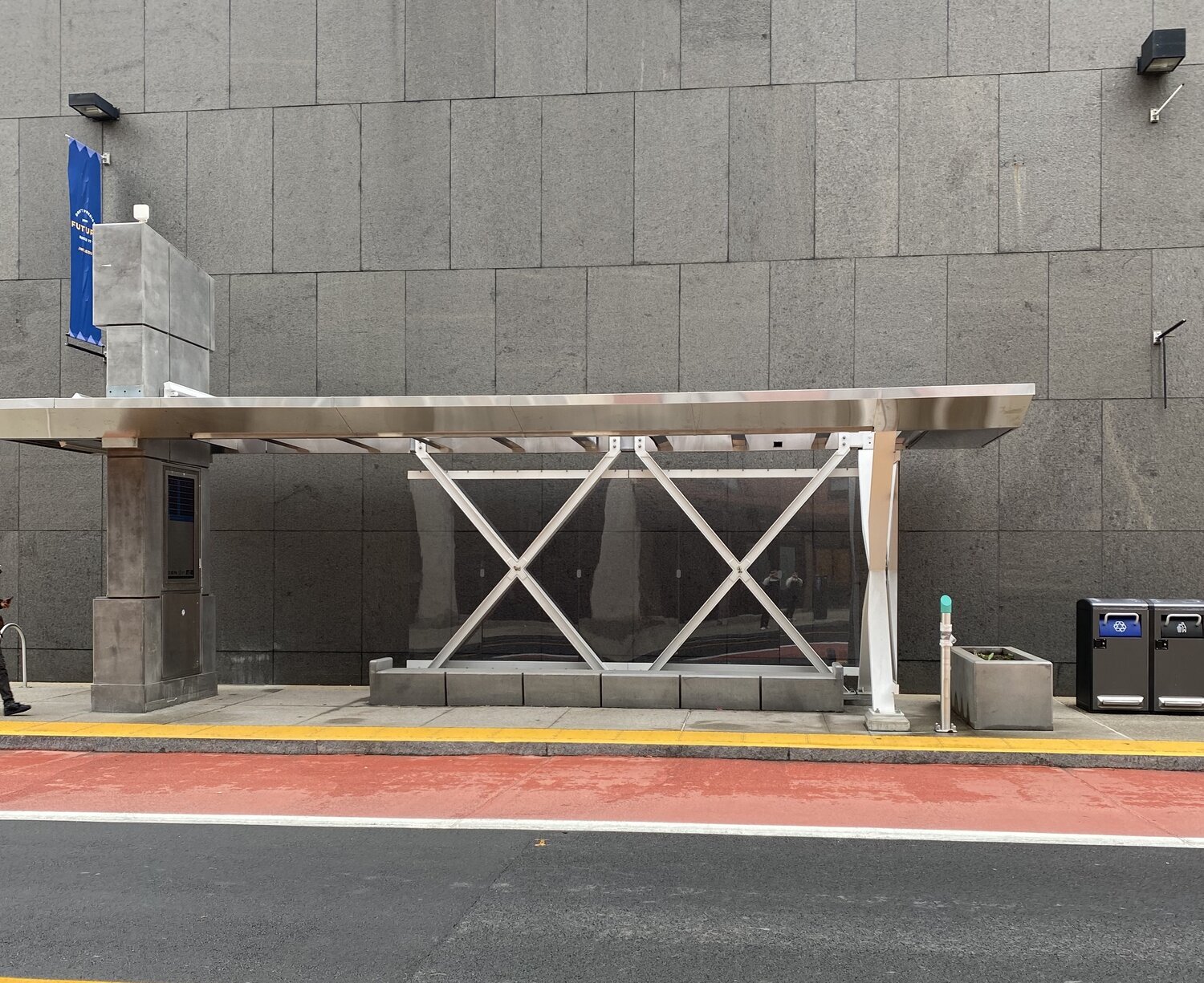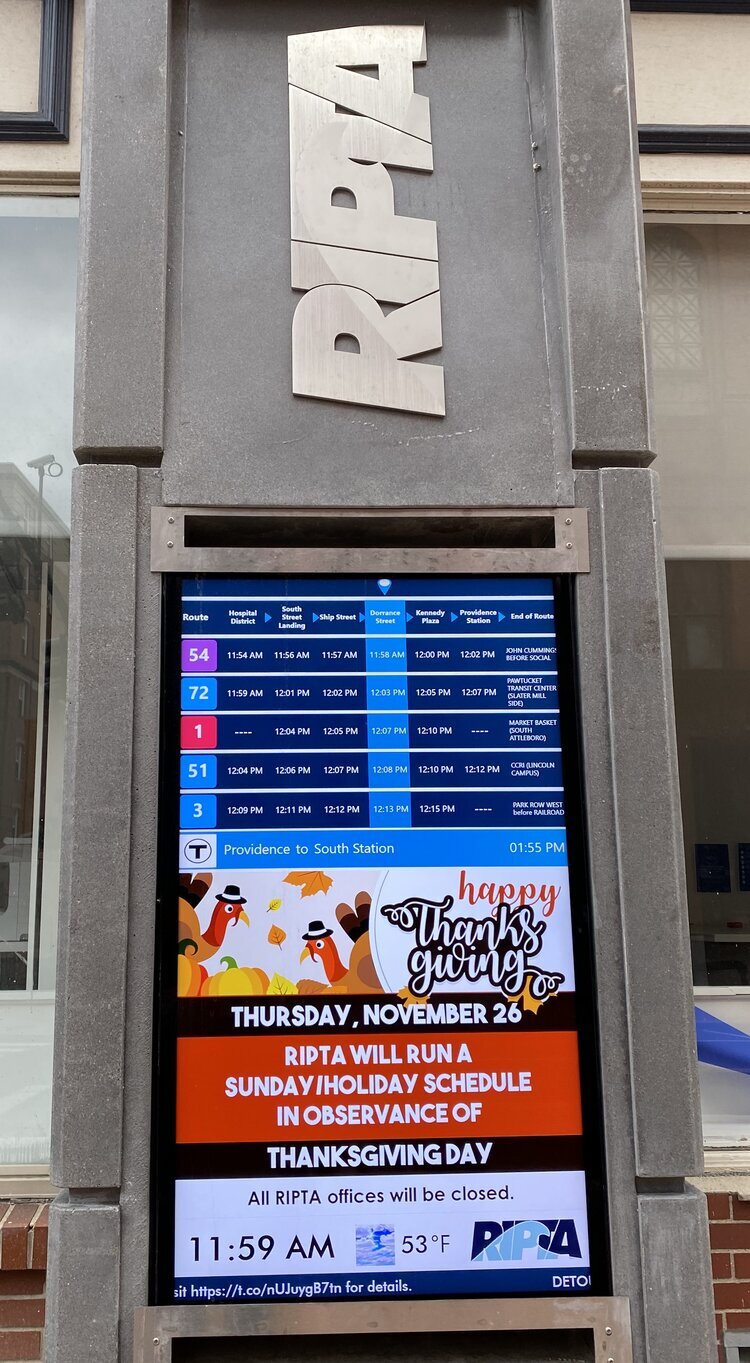A Streetcar Not Desired: Providence, RI
A Streetcar Not Desired: How an ill-conceived Streetcar Proposal Turned into a Robust Downtown Transit Corridor (DTC)
I will be the first to admit that I was wrong. In the early 2010s, I completely believed that the streetcar renaissance was the answer to our transit problems. As a person educated within the confines of New Urbanist principles, I thought the streetcars being proposed and later built were good for transit and the corridors they served. To be fair to New Urbanism, many in the transit and urban planning sphere at the time believed these projects were good, and have since changed that stance. When my own hometown of Providence, RI considered its own streetcar, I was all in.
After first being proposed by then Mayor David Cicilline in 2006, the proposed streetcar route would’ve been 1.6 miles long, and would’ve stretched from the employment-rich “Hospital District” to the East Side via the RIPTA Bus Tunnel, with further phases going to a myriad of transit-suitable corridors. This 100 million dollar price tag for a streetcar route, coupled with one that would operate within mixed traffic was untenable, and as Randall Rose of the RIPTA Riders Alliance one said “the streetcar is not as efficient in improving the economy as RIPTA’s regular service is.”
I so completely bought into the idea of the shiny slow train that would snake through Providence’s city streets was good for transit, that I lost the plot. I forgot the goal of transit was to move a lot of people conveniently, something the streetcar would never achieve. Other streetcar projects conceived and built since have all been generally money pits (Q Line, Cincy Streetcar, OKC Streetcar), and have been regarded as nothing more than vanity projects.
With 13 million dollars being earmarked through the TIGER grant process for the streetcar, RIPTA and Providence scratched the plan in January of 2016 for an “enhanced bus connector.” This new project, born from the failed attempt to get a streetcar, was named “Downtown Transit Connector.” This 17 million dollar project includes:
6 Highly Visible Bus Stops with Raised Platforms
Interlined bus service ( (5 minutes each direction)
Signal Priority Along the Corridor
Dedicated bus lanes and bicycle lanes (Not throughout corridor)
Extending 7 RIPTA Bus Routes service through DTC corridor and Kennedy Plaza, creating one seat rides from places like South County directly to MBTA/Amtrak
MY TAKE
Fast forward to November 2020, I wanted to see how the Downtown Transit Corridor turned out with the bulk of the project nearly completed while visiting home for the holiday.
Things I Really Like
Station Amenities: are gorgeous and quite state of the art, and provide light-rail stop qualities for riders. Take for instance the Dorrance Street (Southbound) and the Ship Street (Southbound) stops pictured below. These stations perfectly embodies the features that are standard for 5 of the 6 stops along the corridor (excluding PVD MBTA/Amtrak Station). The large glass provides shelter for concrete benches, realtime ridership screens, and yellow tactile pavers, consistent with Bus Rapid Transit best practices. I also noticed that recycling and garbage bins, planters, and bike storage were available at all stations. Additionally, the enhanced sidewalk treatments between the station pairs, like the one at Ship Street (The Link) stop are also well designed, and connect so well to the new pedestrian bridge and park.
Resource Allocation/Funding Sustainability: RIPTA has done a great job at creating a cost-effective operation without the creation of new services. By expanding the 3, 4, 51, 54, 58, 62 and the 72, and interlining service to support 5 minute headways are less, they are improving the throughput of all routes, without the creation of a new route.
PVD Station/Kennedy Plaza Connectivity: Kennedy Plaza, the central nucleus for RIPTA’s hub and spoke network, sits ⅓ mile south from the Providence MBTA/Amtrak Station. If you are trying to connect to rail from the RIPTA Bus system, most transfers occur by exiting Kennedy plaza and crossing four streets. This project helps fix that. Take for instance the 62 URI/PVD Station, which used to terminate at Kennedy Plaza, but now will provide a one seat ride from South County to Amtrak/MBTA via DTC. This doesn’t remedy the connectivity problems with every bus rider, but provides a less than 5 minute transfer time to those whose bus doesn’t stop at the train station.
Crosswalk Enhancements Bus Lanes: The dedicated bus lanes are what make or break transit improvements. Nice stations can do only as much as the transit service allows. These bus lanes, along with the signal priority along the corridor will greatly impact the speed in which busses traverse from the hospital district to the PVD MBTA/Amtrak Station. This project also greatly improves the bike/pedestrian experience on the dreaded Memorial Blvd/Exchange Street intersection, which has been scary for all transit connections and downtown dwellers. It still needs work, but I will take any enhancement we can get.
The dreaded Memorial Boulevard/Exchange Street intersection. The largest pedestrian impediment between Kennedy Center Plaza and the Providence MBTA/Amtrak Station.
ROOM FOR IMPROVEMENT:
ADA: With the station shelter footprints being so large, they provide capacity for future ridership, but at the cost of people with mobility issues. Although I didn’t see issues with any of the other stations, I noticed that at the Dorrance St (southbound) station, the path of travel width for someone in a wheelchair wasn’t ideal, and wouldn’t be easy to navigate. The project for the most part worked within the existing curb lines, at the expense of pedestrian throughput access, as specifically found at this station. To reiterate, I did not see this as an issue anywhere else within the project’s facilities.
ADA clearance for Dorrance Street (Southbound) Stop. Not really sure where the minimum clearance for a wheelchair would be achieved based on this configuration and width.
Providence MBTA/Amtrak Station Stop: I found the Providence MBTA/Amtrak stop to be a bit underwhelming. With RIPTA’s only Rapid Line, the R-Line serving the train station at 10 min headways all day, along with 8 other bus routes stopping there with the inception of the project, it should be equipped with the same amenities and capacity as the other new stations. (NOTE: I do not know the future plans of this station and stop, and am not sure if there are plans or construction upcoming that I am not
Bicycle Lanes: While the bicycle lanes are welcome and an improvement to the existing sharrows or lack of facilities, they are not protected and still uncomfortable for the rider. Additionally, there aren't bike lanes south of Kennedy Plaza from what I can tell, and I fail to see the bike lane network that this project enhances in the downtown network.
FINAL THOUGHTS
…is that this project is a transformational step in meeting the future the city overall begs for. The transit experience the Downtown Transit Connector achieves is far greater than what would’ve become of the PVD streetcar, all at a fraction of the cost. The project’s corridor is the next frontier in the city’s development, and while I do not believe ridership will meet the infrastructure improvements currently, I do believe that future infill development in a post-COVID world will make this project a success. Now that RIPTA has shown us its vision for the future, there’s no going back. A-.
http://samzurier.com/public/upload/Appendix-G-2-April-2015-Streetcar-Summary-Presentation.pdf
https://www.ecori.org/government/2015/5/7/ripta-riders-dont-desire-a-providence-streetcar
https://www.providencejournal.com/article/20160106/NEWS/160109587








